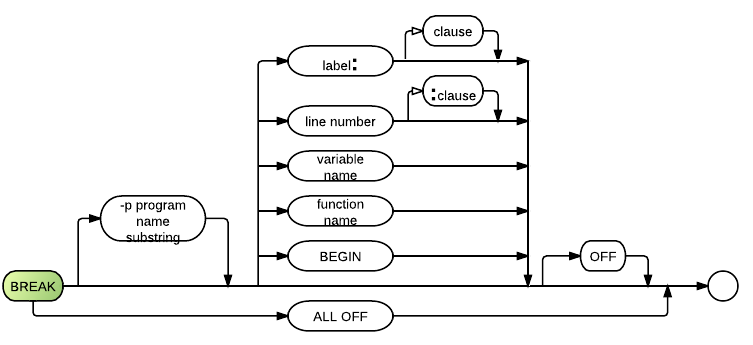Break (command): Difference between revisions
(added -p parameter description) |
(edit) |
||
| Line 1: | Line 1: | ||
The '''Break''' command causes the program to go into [[ | The '''Break''' command causes the program to go into [[Step mode]] when a [[Variable|variable]] value changes, or the specified [[line number]] is encountered. Both "BREAK variable-name" and "[[Display|Display]] variable-name" may be active on the same variable concurrently. | ||
==Examples== | ==Examples== | ||
Revision as of 15:54, 5 January 2012
The Break command causes the program to go into Step mode when a variable value changes, or the specified line number is encountered. Both "BREAK variable-name" and "Display variable-name" may be active on the same variable concurrently.
Examples
The following example will force the currently loaded program to go into step mode when the execution reaches line 1025:
BREAK 1025
Syntax
BREAK [ -p program-name-substring ] BEGIN [ OFF ] (break upon entry) BREAK [ -p program-name-substring ] variable-name [ OFF ] BREAK [ -p program-name-substring ] line[:clause] [ OFF ] BREAK [ -p program-name-substring ] label:[clause] [ OFF ] BREAK [ -p program-name-substring ] FNname [ OFF ] BREAK ALL OFF
This command causes a break to occur upon encountering the indicated conditions. When this happens the program enters step mode.
The -p parameter specifies which program or programs the statement pertains to. If not specified, then the full BR path to the current program is stored as the program name search string. However the substring value could be used as a mask to apply to multiple program libraries.
